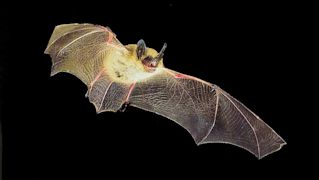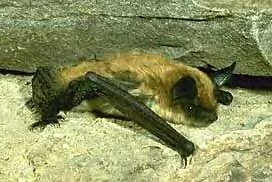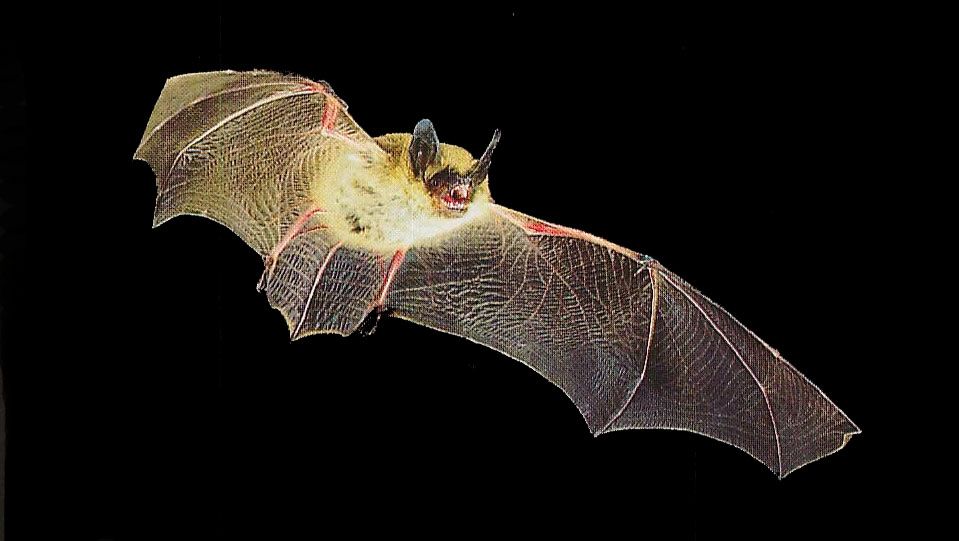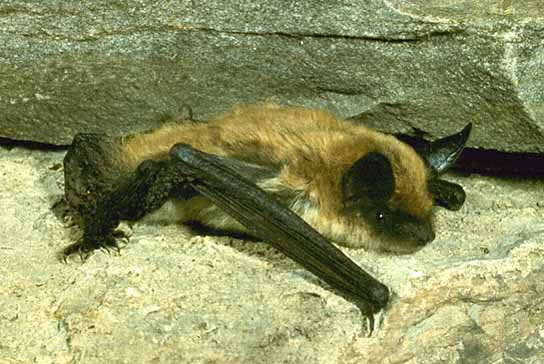Bats
Description
Reddish brown or brown above; slightly paler below. Unique among myotises in having fringe of stiff hairs along edge of interfemoral membrane. L 3 1/8-3 3/4" (80-95 mm); T 1 1/2-1 5/8" (37-42 mm); HF 1/4- 3/8" (8-11 mm); FA 1 1/2-1 3/4" (39-46 mm); E 5/8- 3/4" (16-20 mm); Wt 1/8- 1/4 oz (5-8 g).
![]()
Warning
Bats are susceptible to rabies, a serious viral disease that results in death if untreated. Rabid bats rarely attack humans or other animals, but bats found lying on the ground may be rabid. Never touch or pick up any bat. Stay away from any animal that seems to be acting strangely and report it to animal-control officers. If you are bitten by a possibly rabid animal, you must immediately consult a doctor for a series of injections; there is no cure once symptoms emerge.
Habitat
Oak, pinyon, and juniper forests; desert scrub. Roosts in caves, mines, buildings, and other protected locations.
Range
Throughout much of western U.S., south from British Columbia to California and east to Montana, Colorado, and Big Bend area of Texas; also in e Wyoming, sw South Dakota, and w Nebraska.
Discussion
This colonial bat is active from April
through September. It roosts by day in protected spots, and may rest
between foraging bouts in night roosts in tightly packed clusters.
Its diet includes moths, crickets, and daddy longlegs. This bat is
known to migrate to a winter roost, but its winter habits are
unknown. Mating is in fall, with ovulation occurring between late
April and mid-May. As with many bat species, the birth of the young
is synchronized within the colony. Nursery colonies, from which
males are usually absent, sometimes number in the low
hundreds.




